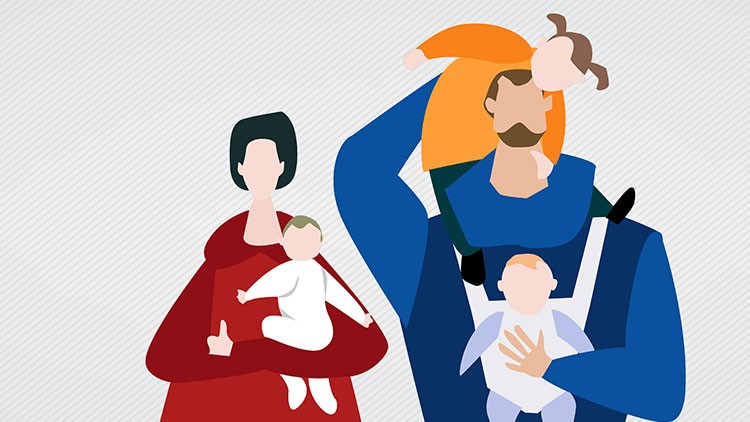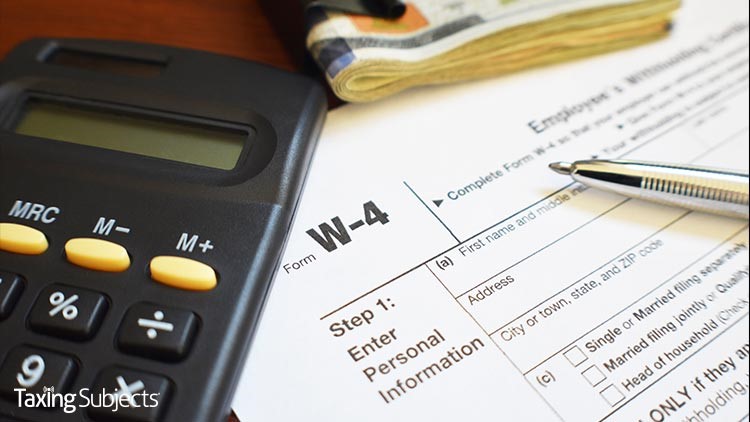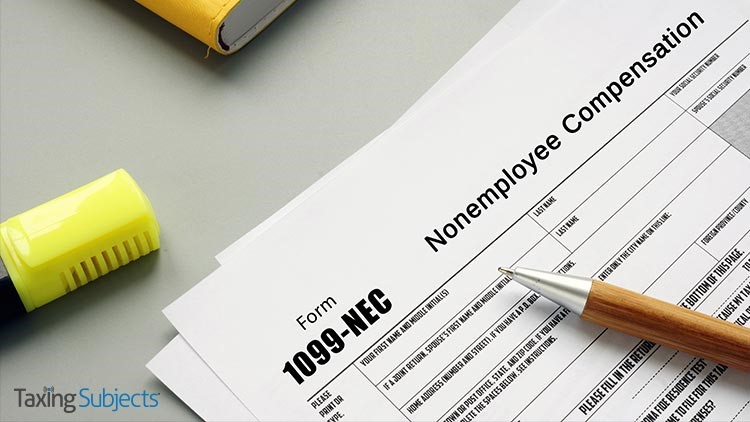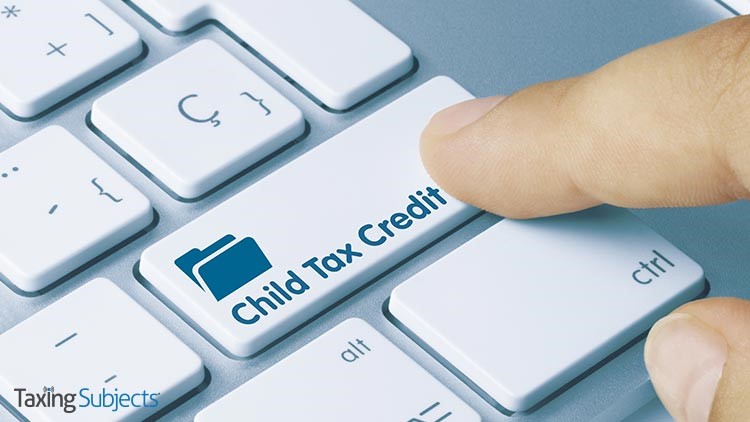by MEA Tax Advisors | Jul 17, 2021 | Tax Tips and News
After a dismal winter made darker by the COVID-19 pandemic, millions of American families are getting a little sunnier disposition thanks to advance payments of the Child Tax Credit.
Millions of the advance payments are now showing up as electronic deposits in checking accounts and mailed checks in mailboxes.
The Internal Revenue Service and the Treasury Department say the first batch of advance monthly payments was worth some $15 billion and went out to about 35 million families. The vast majority of that—roughly 86 percent—went out as direct deposits.
Advance payments of the Child Tax Credit were made possible by the American Rescue Plan (ARP). Under that new law, each monthly payment is up to $300 per month for each child below the age of 6, and up to $250 for each child age 6 through 17.
The payments will continue each month for the remainder of 2021, so anyone who receives a payment this month will get additional payments each month for the rest of the year unless they unenroll.
Beyond the first July 15 payment, additional payments are expected to go out Aug. 13, Sept. 15, Oct. 15, Nov. 15, and Dec. 15.
The Internal Revenue Service says families should keep a few things in mind when it comes to receiving advance CTC payments:
- Families will see the direct deposit payments in their accounts starting July 15. For those receiving payment by paper check, they should remember it may take longer to receive their payments by mail.
- Payments went to eligible families who filed 2019 or 2020 income tax returns.
- Tax returns processed by June 28 are reflected in these payments. This includes people who don’t typically file a return, but during 2020 successfully registered for Economic Impact Payments using the IRS Non-Filers tool or in 2021 successfully used the Non-Filer Sign-up Tool for Advance CTC, also on IRS.gov.
- Payments are automatic. Aside from filing a tax return, including a simplified return from the Non-Filer Sign-Up tool, families don’t have to do anything if they are eligible to receive monthly payments.
There’s still time for families to sign up for advance payments of the Child Tax Credit.
Those who normally aren’t required to file a tax return should take a look at the tools available on IRS.gov. These tools can help those individuals and families determine their eligibility for the advance credit payments, or to help them file a simple tax return in order to sign up for the payments.
Filing a return is also needed to receive an Economic Impact Payment (EIP) or other credits the family may be qualified to receive.
More information can be found on the IRS’ special Advance Child Tax Credit 2021 page. It has up-to-date information about both the credit and the advance payments.
Source: IRS: Monthly Child Tax Credit payments begin
– Story provided by TaxingSubjects.com
by MEA Tax Advisors | Jul 10, 2021 | Tax Tips and News
We’ve all been there before: We got a new job, and on the first day, our new boss puts a Form W-4 on our desk and tells us to fill it out for withholding.
It takes a bit of math and what feels like a good helping of guesswork to figure out just how much tax we need to withhold from a paycheck. Too little, and we could owe a hefty sum when we file; too much, and the IRS hangs onto it until we get a tax refund. Luckily, the Internal Revenue Service has an online tool that can help taxpayers determine how much they need to withhold.
The Tax Withholding Estimator on IRS.gov does just what it says: help taxpayers determine whether their employer is withholding enough tax or if they need to fill out a new Form W-4. The tool is available for regular employees, but also for retirees, self-employed taxpayers and others—virtually anyone who gets a regular paycheck.
With just three easy steps, the clouds of uncertainty can begin to clear.
Step One: Gather Documents
This first step should be completed before taxpayers bring up the Estimator. Users will need a copy of their most-recent pay stub and tax return. Once those items are in hand, the user can go online and use the Tax Withholding Estimator on IRS.gov.
Users should read all the information and directions presented there. To move on, click the blue Tax Withholding Estimator button.
Step Two: Answer Questions
Once they’re done with the opening information, users get down to giving the tool with the information needed to come up with the correct withholding amount. This is done by merely answering the questions posed on-screen about the user’s tax situation.
As the user completes a section, clicking the blue Next button sends them to the next step.
Step Three: Review Results
The Estimator helps users aim for a tax-due amount that’s close to zero—or a refund.
Depending on the information given by the user, the tool may deliver a recommendation to submit a new Form W-4, Employee’s Withholding Allowance Certificate. The W-4 goes to the employer, not the IRS, and is used to change the amount withheld each pay period.
Many times, employers use an online method for making changes in withholding, so workers should check with their employers before filling out a paper form.
Taxpayers who get a pension can use their results to fill in a Form W-4P, which goes to the payer.
Source: What taxpayers need know about using the IRS Tax Withholding Estimator.
– Story provided by TaxingSubjects.com
by MEA Tax Advisors | Jun 24, 2021 | Tax Tips and News
The Internal Revenue Service has unveiled a pair of new tools to help families manage and monitor advance monthly payments of the Child Tax Credit, made possible by the American Rescue Plan.
The new tools join the Non-Filer Sign-up Tool that helps families who aren’t normally required to file an income tax return to file a return and register for the Child Tax Credit.
The Child Tax Credit Eligibility Assistant allows families to determine if they qualify for the advance credit just by answering some questions.
The Child Tax Credit Update Portal can verify taxpayers are eligible for the advance CTC payments. This tool can also be used to unenroll taxpayers from the advance payments if they choose, so they can get a lump sum when they file a tax return next year.
All families need to access the password-protected Portal is internet access and a computer or smartphone.
The Child Tax Credit Eligibility Assistant and the Child Tax Credit Update Portal are both available now on IRS.gov.
“IRS employees continue to work hard to help people receive this important credit,” IRS Commissioner Chuck Rettig said. “The Update Portal is a key piece among the three new tools now available on IRS.gov to help families understand, register for and monitor these payments. We will be working across the nation with partner groups to share information and help eligible people receive the advance payments.”
More features are on the way
A number of updates and upgrades are scheduled for the Child Tax Credit Update Portal by the IRS. Families will soon be able to use the portal to check the status of their payments. Later this month, the IRS expects taxpayers to be able to update bank account information for advance CTC payments. Next month, an upgrade is planned that will let taxpayers change their mailing address.
In late summer and fall, taxpayers should be able to use the Portal to update their family status and changes in income. More on these improvements can be found on the tool’s FAQs on IRS.gov.
Ahead of all the upgrades, though, the initial version of the Portal and its unenrollment feature are worthy of the spotlight.
Some families might prefer to wait until the end of the year and get the full credit amount as a tax refund from their 2021 return, instead of getting the advance payments. The Portal gives these taxpayers an easy way to opt out of the monthly CTC payments.
Unenrollment might also help those families that no longer qualify for the Child Tax Credit – or think they won’t qualify when they file a 2021 tax return.
There are three main ways this could happen:
- Their income in 2021 is too high to qualify them for the credit.
- Someone else (an ex-spouse or another family member, for example) qualifies to claim their child or children as dependents in 2021.
- Their main home was outside of the United States for more than half of 2021.
ID verification required for portal access
Users who want to access the Child Tax Credit Portal first have to verify their identity. Those without an existing IRS account will have to verify their identity with a kind of photo identification that uses ID.me, a trusted third-party vendor for the IRS. This important security check will keep taxpayers’ accounts secure and shielded from identity theft.
Users who have an existing IRS username or an ID.me account can use those credentials to sign in, without creating a new account.
Taxpayers without internet access or who otherwise can’t use the online tool to unenroll should contact the IRS using the telephone number included in their IRS outreach letter.
Check eligibility first
The first stop for taxpayers and their families should be the Child Tax Credit Eligibility Assistant. Here, families can see if they are qualified for the Child Tax Credit and its advance payments.
This simple tool uses a series of questions to determine if the taxpayer qualifies.
It should be noted that this is merely an eligibility tool, not a site to register, so no personal information is requested or used. But it is critical in determining whether the taxpayer should go on and either file a tax return or register using the Non-Filer Sign-up Tool.
For details on the provisions of the Advance Child Tax Credit, check out our Taxing Subjects blog on the CTC or visit the IRS web page Advance Child Tax Credit Payments in 2021.
The IRS page has direct links to all three tools mentioned here, a list of frequently asked questions and other resources.
Sources: IRS announces two new online tools to help families manage Child Tax Credit payments.
– Story provided by TaxingSubjects.com
by MEA Tax Advisors | Jun 23, 2021 | Tax Tips and News
Most times, businesses pay their employees for the work they do, and set aside a portion of those wages to in turn, pay Uncle Sam. But what if the business has to pay someone who isn’t technically an employee?
Enter nonemployee compensation.
Form 1099-NEC, Nonemployee Compensation, is used to help collect taxes from those who get paid for services to a company or nonprofit organization while not being a full employee.
The law demands that anyone who earns $600 or more in nonemployee compensation in a year has to report the payments using Form 1099-NEC.
The deadline for filing Form 1099-NEC is Jan.31. For 2021 returns, there is no automatic 30-day extension of time to file. However, hardship cases may be able to qualify for an extension.
The IRS says a Form 1099-NEC has to be issued for each person that a business or nonprofit group paid for:
- Services performed by someone who is not their employee (including parts and materials);
- Cash payments for fish (or other aquatic life) they purchased from anyone engaged in the trade or business of catching fish; or
- Payments to an attorney.
Some specific kinds of payments don’t have to be listed on the Form 1099-NEC. For a full list, see the Instructions for Forms 1099-MISC and 1099-NEC on the IRS website.
Backup Withholding
If a person due nonemployee compensation hasn’t supplied the payer with a Taxpayer Identification Number (TIN), or if the IRS says the payee’s TIN doesn’t match their records, backup withholding may be necessary.
A valid TIN can be a Social Security number; employer identification, individual taxpayer identification or adoption taxpayer identification.
Backup withholding may apply to most kinds of payments that are reported on Form W-2G and the various Forms 1099. It is defined as the taxpayer’s requirement to withhold a certain percentage of tax from income not otherwise subject to withholding.
The person or business paying the taxpayer doesn’t generally withhold taxes from some kind of payments, yet there are cases when the payer is required to withhold a percentage of tax due the IRS.
At present, the current backup withholding tax rate is 24%.
For more information see the Instructions for Forms 1099-MISC and 1099-NEC; the General Instructions for Certain Information Returns; or Publication 15, Employer’s Tax Guide (Circular E).
Sources: Businesses must report nonemployee compensation and backup withholding; Instructions for Forms 1099-MISC and 1099-NEC.
– Story provided by TaxingSubjects.com
by MEA Tax Advisors | Jun 17, 2021 | Tax Tips and News
The Internal Revenue Service has rolled out a new online tool that’s built to help families register for monthly Advance Child Tax Credit payments. The tool is tailored to the needs of families who are eligible for the advance payments, but don’t normally file an income tax return.
The Non-Filer Sign-Up tool, though, does more than just register taxpayers for the CTC payments. It can also help these taxpayers register for the third round of Economic Impact Payments or claim the Recovery Rebate Credit for any of the first two rounds of EIPs they may have missed.
The challenge for the IRS is to get eligible individuals who don’t normally make enough income to file a yearly tax return to give their information to the agency so they can actually receive the CTC advance payments. The IRS needs the basic information—such as name, address, Social Security numbers and information on dependents—to figure and issue the CTC advances.
IRS Commissioner Chuck Rettig says many times, these individuals and families may have little or no income; they may even be experiencing homelessness, or be a part of another underserved group.
“We have been working hard to begin delivering the monthly Advance Child Tax Credit to millions of families with children in July,” said Commissioner Rettig. “This new tool will help more people easily gain access to this important credit as well as help people who don’t normally file a tax return obtain an Economic Impact Payment. We encourage people to review the details about this important new effort.”
No action needed by most eligible taxpayers
The new tool should not be used by families who’ve already filed—or plan to file—2019 or 2020 income tax returns. Also, those who want to claim other tax credits, such as the Earned Income Tax Credit (EITC) for low- and moderate-income families, shouldn’t use the online tool, but should file a regular tax return instead.
The IRS also reminds that there are scams related to the Advance Child Tax Credit payments and Economic Impact Payments. The only way to get either of these payments is to either file a tax return with the IRS, or to register online using the Non-Filer Sign-Up tool. It is available only on IRS.gov. Any other option is a scam.
For more information on the Advance Child Tax Credit payments, check out our Taxing Subjects blog.
More tools are on the way
The IRS says it will update its Advance Child Tax Credit 2021 page in the coming weeks with some new tools, including:
- An interactive Child Tax Credit eligibility assistant to help families determine whether they qualify for the Advance Child Tax Credit payments.
- Another tool, the Child Tax Credit Update Portal, will initially enable anyone who has been determined to be eligible for advance payments to see that they are eligible and unenroll or opt out of the advance payment program. Later, it will allow people to check on the status of their payments, make updates to their information and be available in Spanish.
Source: IRS unveils online tool to help low-income families register for monthly Child Tax Credit payments.
– Story provided by TaxingSubjects.com





